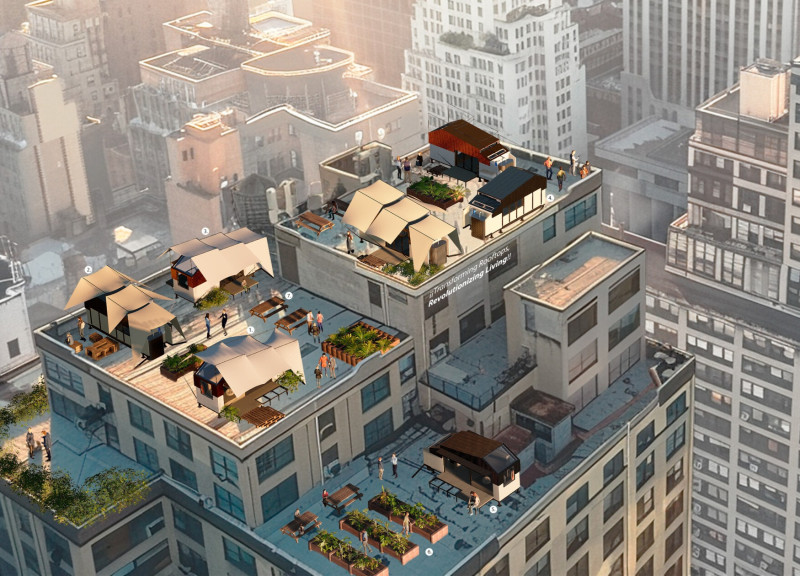5 key facts about this project
Central to the project is its purpose, which serves as a multifunctional space adaptable to various activities. Whether it is utilized as a community gathering spot, an educational facility, or a workspace, the design prioritizes inclusivity and accessibility, inviting a diverse range of occupants to engage with the space. The layout promotes a fluid movement throughout the interior and exterior, enhancing connectivity and encouraging interaction among users.
In terms of architectural features, the project incorporates an open floor plan that maximizes natural light and enhances the overall sense of openness. Ample glazing allows for panoramic views of the surrounding environment, creating a seamless transition between indoor and outdoor spaces. This connection is further strengthened through the use of terraces and balconies, which not only extend the usable area but also foster a deeper appreciation for the natural elements that frame the building.
The materiality of this project plays a vital role in its identity. A selection of sustainable materials has been employed, including reclaimed wood, natural stone, and glass. Reclaimed wood adds warmth and texture to the interiors while reinforcing a commitment to sustainable practices. Natural stone, with its durability and timeless appeal, offers a robust foundation that complements the overall structural integrity. Glass, utilized generously in the façade, enhances visibility and promotes an inviting atmosphere while ensuring energy efficiency through the implementation of high-performance glazing systems.
One of the unique design approaches evident in this project is the strategic use of passive design principles. By orienting the building to take advantage of natural ventilation and sunlight, the design minimizes reliance on artificial heating and cooling systems, creating a more sustainable environment that aligns with contemporary architectural practices. This sensitivity to environmental factors not only contributes to the project's sustainability but also enhances the overall comfort of the occupants.
Landscaping integrates harmoniously with the architectural elements, further enhancing the project’s character. Native vegetation has been thoughtfully incorporated to reduce water consumption and foster biodiversity. The landscaping not only beautifies the surroundings but also serves as a natural buffer, providing privacy while inviting users to explore the exterior spaces.
The project's design outcomes reflect a commitment to modern architectural ideas grounded in practicality and sustainability. It stands as a testament to the evolving nature of architecture, where form and function coexist in balance. The thoughtful integration of natural elements with the built environment underscores the project's relevance to contemporary design discussions, making it a worthy subject for exploration.
Readers are encouraged to delve deeper into the project's architectural plans, architectural sections, and architectural designs for comprehensive insights into the intricate details and underlying concepts that define this innovative endeavor. Engaging with these components will provide a broader understanding of the architectural ideas that have shaped this noteworthy project, enriching the discourse surrounding modern architectural practices.


























